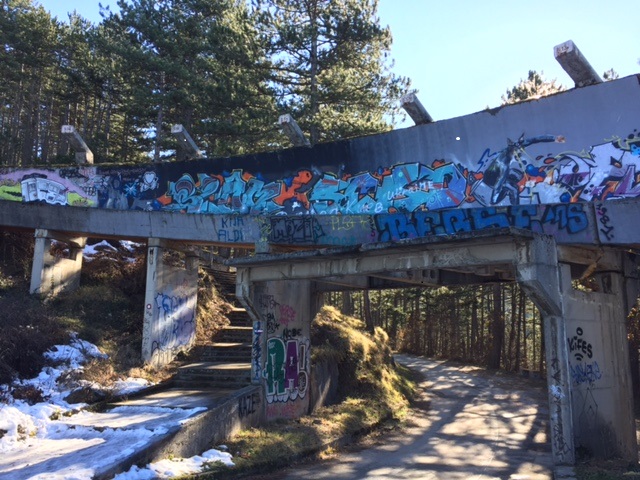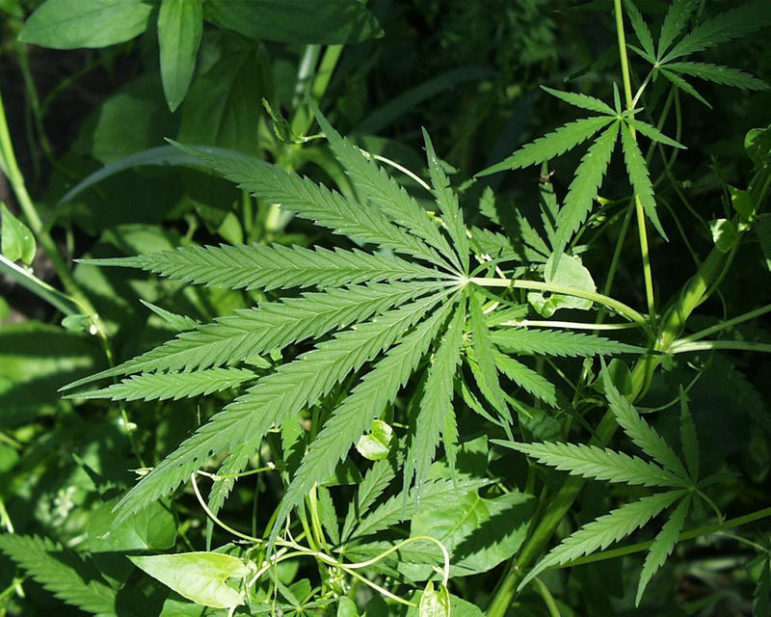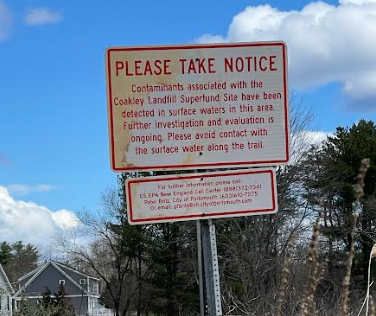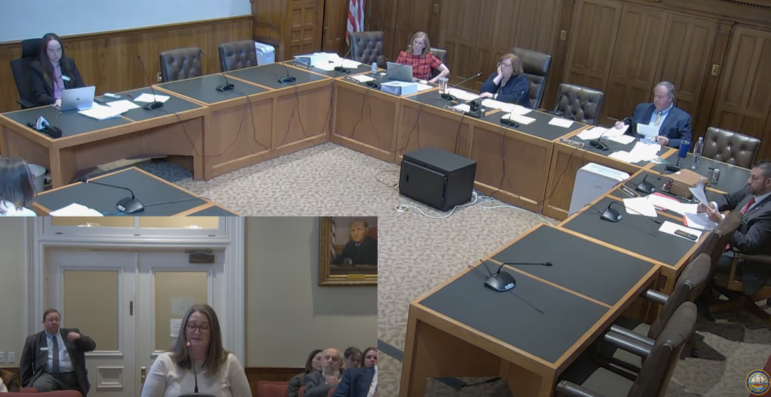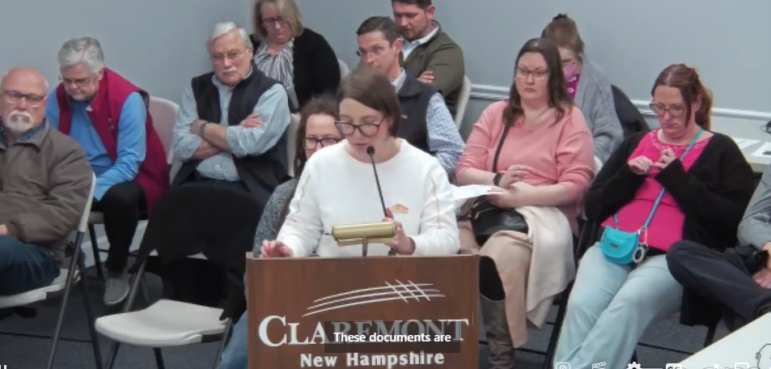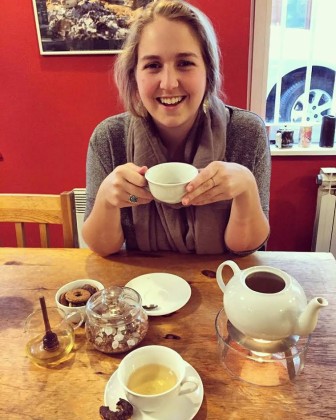
Sarah Freeman-Woolpert
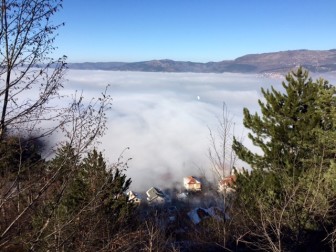
Sarah Freeman-Woolpert Photo
Fogged-in Sarajevo as seen from Trebevic Mountain.
Sarah’s View from the Borderlands
By Sarah Freeman-Woolpert
When I first noticed the thick white fog in Sarajevo, I wrote it off as some early morning haze. I did not realize that the fog is a winter staple in this city.
We discuss the fog the way residents of some cities chat about the level of snowfall or the level of humidity. Our lives are set before a dense backdrop of dirty, polluted air that consumes the city for weeks, even months, on end.
My family was lucky to arrive at the Sarajevo airport for Christmas, as most flights were canceled day after day, unable to land in the nondescript sea of whitish muck below.
I tried to tour them around on the first days of their visit, but everything I wanted to show them was now invisible, enveloped behind the grey-white wall of filth. The air is bitter, chemical-tasting. It burns your nose and throat.
We opted indoors whenever possible, consuming copious amounts of Bosnian sweets soaked in honey and the Bosnian version of hot chocolate, which is basically chocolate pudding that has been heated up and served in a very fancy glass. We made a big sacrifice, indeed, but someone had to make it.
While visiting, my family sought out any excuse to get above the tree line and breathe fresh air. From above, the city appears as a perfect basin, holding an opaque white substance. It is one of the most dramatic indicators of climate pollution I have ever seen.
We climbed to the Skakavac waterfall one day and took a tour up to Trebevic Mountain, where you can feel your lungs expand in a desperate effort to gain some clean oxygen.
This tour was one I had done on my first trip to Bosnia, and it gives a basic history of the siege of Sarajevo — the longest siege of a capitol city in modern warfare. Bosnian Serb forces surrounded the city from 1992 to 1996, and it was uniquely brutal for the indiscriminate killing of civilians from all sides by snipers firing from the hills.
The tour takes you to the Tunnel of Hope, where the Bosnian Army obtained supplies, and civilians could get some necessities, which were often sold for a grossly inflated profit. We also saw the old abandoned bobsled track that was used for the 1984 winter Olympics, then commandeered by Bosnian Serb snipers as protection when firing on the city below.
During the siege, electricity and water were abruptly cut off to families in Sarajevo, and the snipers would shoot at civilians lining up at the few operating water taps around the city. Our guide told us that snipers would shoot the jugs people used to carry water back home, displaying a dark sense of humor in how they waited for the person to return inside for another jug, then shoot that one too.
I have several friends in Sarajevo who lived through this siege as children, spending years in their families’ basements and surviving on little, with no idea how long the fighting would last. No matter how much time I spend here, I will never understand what families and children went through during those years of violence. I strive not to analyze the people I have met in Bosnia by guessing how their wartime experiences shaped who they are today.
Yet I have noticed a particular resilience and resourcefulness of friends in Sarajevo that I imagine holds some connection to growing up with very little, at times.
They do not revel in material extravagance. Many of my friends evade the ticket controllers on the tram to keep from buying the 90-cent ticket. One friend coached me on how to keep my phone conversations short so my credit would last longer.
Visitors to my apartment immediately ask how much I pay and cluck their tongues in disapproval at what, to me, may be the cheapest rent I ever pay.
I feel at home here, somehow.
I love the people.
They remind me of my grandfather, who was raised during the Depression. He has worn the same tattered, threadbare shirt for forty years and consumes expired deli meats because really, they can’t go to waste. I connect with this mentality in a way I never connected with the somewhat luxurious lifestyle I witnessed, and was occasionally roped in by, during my college years in Washington, D.C.
Life in D.C. was not the college experience I’d been sold in the movies. For the most part, we did not fit the image of a bunch of broke college kids eating Chinese food and drinking cheap beer on the floor of a drafty apartment.
Our meal plan was just an egregiously expensive subscription to Whole Foods, some sushi restaurants and a bunch of places with Happy Hour drinks for under $10 – a steal! We paid $1,400 per month for rent. Each.
I felt an almost overpowering sense of discomfort living in Washington, D.C. I was raised on Goodwill shopping trips and cars with crank windows. Our family was thrifty by choice; we invested in education and travel but never the so-called “finer things” in life.
The spending culture in D.C. was alternately numbing and horrifying to me, and I often reacted with a mix of preachy “first world problems” comments, and then would succumb to drinking the stupid fancy cocktails because I just didn’t want to be antisocial by reading in my room alone again on a Friday night.
I joke with college friends about the “bougie brunch culture” in D.C., the phenomenon of young professionals who stay out late drinking overpriced craft beer at a hipster bar, then roll out of bed at noon for a $35 bottomless brunch, which everyone will exclaim is such a deal for all-you-can-drink mimosas to help work off your hangover from the previous night.
My college years often felt like a brief invitation to an exclusive country club, a window into the lives of our nation’s elite (There was once a party hosted at The George Washington University called “Occupy the Night: Party like the 1%”). I did a lot of wrestling with my conscience and my privilege during that time.
But being in Sarajevo, in many ways, has brought me back to the source, to my roots. I grew up in Pembroke, New Hampshire, and although my family always had enough, many of my childhood friends’ families really struggled to get by.
A few barely had food on the table and lived paycheck to paycheck. I think about these kids all the time, kids who are now adults, many with babies (and credit card debt) of their own.
They are the faces I see when I watch the American Presidential debates and hear candidates whose lives have always resembled my life in D.C., talking with a pretense of understanding the kinds of families who are just barely making ends meet.
And I think about these kids from New Hampshire when I meet young people in Sarajevo, whose experiences of hardship are incomparable, but not wholly unrelated, to those from home.
Many people I have met in Sarajevo have told me about how, during the siege, their mothers continued to dress up for work each morning and wouldn’t leave the house unless their hair and lipstick were perfect.
They walked onto the streets, high heeled and immaculately coiffed, only to run from the whistle of a falling shell or dart across an exposed intersection to avoid sniper fire. But they kept going to work, they kept living their lives. It was a matter of dignity, of self-preservation.
And when I think about dignity, I think about home. I think of New Hampshire families I grew up with, who barely had enough to feed their kids, but dammit, they would send them to college if it put them in debt for the next twenty years.
The resilience of families in Sarajevo, this stubborn refusal to stop living, reminds me of the pride and the grit embedded in the American ethos. We do not need to play the game of Who’s Suffering Hurts More to reach the conclusion that there is always, always more common ground than international media and language barriers allow us to convey.
My life in New Hampshire brings the lives of people here in Sarajevo into sharper focus, for me. I am reaffirmed, time and again, that we have much more in common than the dominant narratives of each of our societies have led us to believe.
Sarah’s View from the Borderlands is Sarah Freeman-Woolpert’s new biweekly column for InDepthNH.org. Freeman-Woolpert is originally from Pembroke, New Hampshire. She graduated from The George Washington University in 2015 and is currently spending 10 months in Bosnia and Herzegovina conducting research on youth activism and civic engagement. To read more of her writing, visit her blog at stilllifesarah.blogspot.ba.
